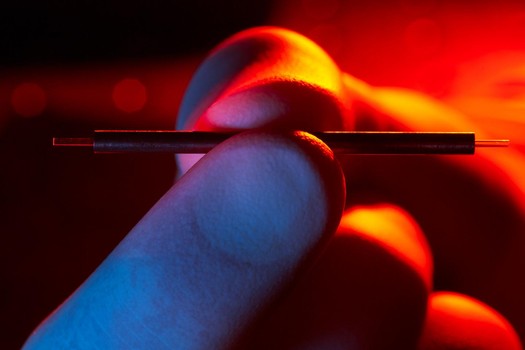A particle accelerator that is 1.5 centimeters long, one millimeter thick, and has a laser light source that is about three feet long has been proven successful for the first time. A host of physicists and engineers from Europe and the United States reported the development in the edition of the journal Nature Communications. The prototype has been proven to be successful but does not generate comparable particle speeds to large particle accelerators. New laser technology promises to make the miniature particle accelerator as useful as large scale models as well as reducing costs.
The basic need for smaller particle accelerators is radiation in the terahertz range of the spectrum. Terahertz radiation is between infrared radiation and microwave radiation frequencies. Terahertz radiation has wavelengths that are 1,000 times shorter than the electromagnetic radiation from the radio frequency range that is used in large particle accelerators. The reduction in wavelength allows all parts of the particle accelerator to be reduced in size.
The prototype produced energy that increased the speed of a single particle by seven kiloelectron volts. This level of energy is not comparable to the speeds that massive particle accelerators can achieve. The addition of a laser source that is a free-electron laser produced particle speeds that are equivalent to the fastest known particle accelerators. Further refinement of the free-electron laser is needed to make the tiny particle accelerator functional for daily use.
A miniature particle accelerator promises to make a detailed understanding of photosynthesis, astrophysics, and medical imaging faster, safer, and simpler. An array of the small particle accelerators could theoretically be used to conduct multiple experiments at the same time with a single laser energy light source or a plasma energy source. The small size also makes the development of a black hole in the laboratory a much safer proposition due to the size and the ability to control the light energy.















